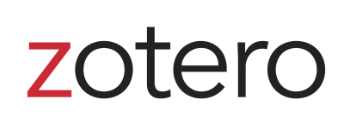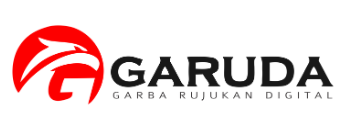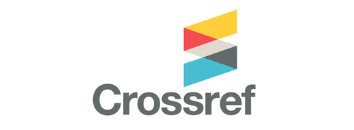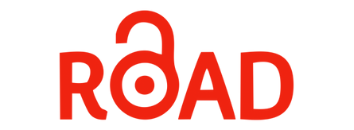The Role of Competitiveness Mechanism Protection of Marketing Performance: Resource-Advantage Theory Perspective
DOI:
https://doi.org/10.24002/kinerja.v26i1.4945Keywords:
entrepreneurial creativity, marketing performance, product innovativeness, protection of competitiveness mechanismsAbstract
The study aims to determine the conceptual and empirical flow of inconsistencies in entrepreneurial, creative relationships on marketing performance centred on protecting competitiveness mechanisms. This conception is built to explore the critical role of protecting the competitiveness mechanisms of entrepreneurial creativity and product innovativeness. Optimization of post-pandemic marketing performance requires creativity and innovativeness and the importance of safeguarding competitiveness mechanisms. Seven hypotheses were developed and tested with the SEM-PLS technique in a sample frame of 230 MSMEs in Central Java, Indonesia. The study's findings contribute to the protection of competitiveness mechanisms conceptually, both empirically and practically. First, directly entrepreneurial creativity has a positive impact. On the contrary, there is a negative relationship of products innovatively in marketing performance. Second, the protection of competitiveness mechanisms can positively bridge innovative product relationships and entrepreneurial creativity in marketing performance. Third, the potential mediator of protection of competitiveness mechanisms can overcome the negative association of product innovativeness on marketing performance. The practical implications of criticizing MSMEs are not enough just creative and innovative, but still, require the protection of resource excellence. External factors protecting intellectual competitiveness mechanisms contribute to providing a competitive advantage. The theoretical implication is that the theory of competing resource advantages that a competitor's scarce resources have has the potential to gain a comparative advantage.
References
Abusalma, A. (2021). The role of strategic innovation for sustainability of businesses during the covid-19 pandemic. Management Science Letters. https://doi.org/10.5267/j.msl.2021.3.010
Al-Aali, A., & Teece, D. J. (2014). International Entrepreneurship and the Theory of the (Long-Lived) International Firm: A Capabilities Perspective. Entrepreneurship: Theory and Practice. https://doi.org/10.1111/etap.12077
Anwar, M., Rehman, A. U., & Shah, S. Z. A. (2018). Networking and new venture’s performance: Mediating role of competitive advantage. International Journal of Emerging …. https://www.emerald.com/insight/content/doi/10.1108/IJoEM-07-2017-0263/full/html
Asenge, E. L., Diaka, H. S., & Soom, A. T. (2018). Entrepreneurial Mindset and Performance of Small and Medium Scale Enterprises in Makurdi Metropolis, Benue State-Nigeria. International Journal of Innovation, 6(2). https://doi.org/10.5585/iji.v6i2.223
Barney, J. (1991). Firm Resources and Sustained Competitive Advantage. Journal of Management. https://doi.org/10.1177/014920639101700108
Batra, R., Ramaswamy, V., Alden, D. L., Steenkamp, J. B. E. M., & Ramachander, S. (2000). Effects of Brand Local and Nonlocal Origin on Consumer Attitudes in Developing Countries. Journal of Consumer Psychology. https://doi.org/10.1207/s15327663jcp0902_3
Bol, D., Matakos, K., Troumpounis, O., & Xefteris, D. (2019). Electoral Rules, Strategic Entry and Polarization. SSRN Electronic Journal. https://doi.org/10.2139/ssrn.3304543
Chambers, R., & Conway, G. R. (1992). Sustainable rural livelihoods: practical concepts for the 21st century. IDS Discussion Paper.
Cho, I., Park, H., & Kim, J. K. (2012). The moderating effect of innovation protection mechanisms on the competitiveness of service firms. Service Business, 6(3). https://doi.org/10.1007/s11628-012-0140-3
Cieślik, A., & Michałek, J. J. (2017). Innovation forms and firm export performance: Empirical evidence from ECA countries. Entrepreneurial Business and Economics Review, 5(2), 85–99. https://doi.org/10.15678/EBER.2017.050205
Costa, E., Soares, A. L., & Sousa, J. P. De. (2016). Information, knowledge and collaboration management in the internationalisation of SMEs: A systematic literature review. International Journal of Information …. https://www.sciencedirect.com/science/article/pii/S0268401215300049
Doh, S., & Kim, B. (2014). Government support for SME innovations in the regional industries: The case of government financial support program in South Korea. Research Policy. https://doi.org/10.1016/j.respol.2014.05.001
Edeh, J. N., Obodoechi, D. N., & Ramos-Hidalgo, E. (2020). Effects of innovation strategies on export performance: New empirical evidence from developing market firms. Technological Forecasting and Social Change, 158. https://doi.org/10.1016/j.techfore.2020.120167
Elwisam, E., & Lestari, R. (2019). Penerapan Strategi Pemasaran, Inovasi Produk Kreatif dan Orientasi Pasar Untuk Meningkatkan Kinerja Pemasara UMKM. Jurnal Riset Manajemen Dan Bisnis (JRMB) Fakultas Ekonomi UNIAT, 4(2). https://doi.org/10.36226/jrmb.v4i2.265
Emami-Langroodi, F. (2018). SchumpeterrS Theory of Economic Development: A Study of the Creative Destruction and Entrepreneurship Effects on the Economic Growth. SSRN Electronic Journal. https://doi.org/10.2139/ssrn.3153744
Fernandez, D. S. (1994). Intellectual property protection in the EDA industry. Proceedings - Design Automation Conference. https://doi.org/10.1145/196244.196320
Ferreira, J., Coelho, A., & Moutinho, L. (2020). Dynamic capabilities, creativity and innovation capability and their impact on competitive advantage and firm performance: The moderating role of entrepreneurial …. Technovation. https://www.sciencedirect.com/science/article/pii/S0166497217301335
Gomez, J., Lanzolla, G., & Maicas, J. P. (2016). The Role of Industry Dynamics in the Persistence of First Mover Advantages. Long Range Planning, 49(2). https://doi.org/10.1016/j.lrp.2015.12.006
Guoyou, Z., Yueqiang, Z., & Yiping, W. (2009). On the Reason for the Innovation of Business Model and the Mechanism of Transformation. Isip: 2009 International Symposium on Information Processing, Proceedings, 2.
Hair, J. F., Hult, G. T. M., Ringle, C. M., & Sarstedt, M. (2017). A Primer on Partial Least Squares Structural Equation Modeling (PLS-SEM)., 2^nd^ Ed. CA: Sage.
Hair, Joe F., Ringle, C. M., & Sarstedt, M. (2011). PLS-SEM: Indeed a silver bullet. Journal of Marketing Theory and Practice, 19(2), 139–151. https://doi.org/10.2753/MTP1069-6679190202
Hamsioglu, A. B. (2016). The Role Of Marketing Capabilities In Innovation Based Competitive Strategies: An Application On Production Business In Ankara`. Advances in Social Sciences Research Journal, 3(11). https://doi.org/10.14738/assrj.311.2316
Hanmaikyur, T. J. (2016). Effect of entrepreneurial marketing practices on the performance of small and medium scale enterprises in Makurdi metropolis of Benue state, Nigeria. International Journal of Academic Research in Business and Social Sciences, 3, 1–347.
Hasyim, Sahyar, & Mahmud. (2017). Isolating mechanism as a mean to improve performance of SMEs. European Research Studies Journal, 20(3). https://doi.org/10.35808/ersj/731
Henseler, J., Ringle, C. M., & Sinkovics, R. R. (2009). The use of partial least squares path modeling in international marketing. Advances in International Marketing, 20, 277–319. https://doi.org/10.1108/S1474-7979(2009)0000020014
Huang, T. K., Liao, C.-Y., Wang, Y.-T., & Lin, K.-Y. (2018). How Does Social Media Interactivity Affect Brand Loyalty? Proceedings of the 51st Hawaii International Conference on System Sciences. https://doi.org/10.24251/hicss.2018.266
Hunt, S. D. (2001). Commentary ‐ A General Theory of Competition: issues, answers and an invitation. European Journal of Marketing, 35(5/6). https://doi.org/10.1108/03090560110388097
Hunt, S. D., & Arnett, D. B. (2003). Resource-Advantage Theory and Embeddedness: Explaining R-A Theory’s Explanatory Success. Journal of Marketing Theory and Practice. https://doi.org/10.1080/10696679.2003.11501928
Kraehe, A. M. (2019). Entrepreneurship as Creative Destruction. In Art Education (Vol. 72, Issue 5). https://doi.org/10.1080/00043125.2019.1640037
Kristinae, V., Wardana, I. M., Giantari, I. G. A. K., & Rahyuda, A. G. (2020). The role of powerful business strategy on value innovation capabilities to improve marketing performance during the covid-19 pandemic. Uncertain Supply Chain Management, 8(4). https://doi.org/10.5267/j.uscm.2020.8.005
Levie, J., & Autio, E. (2011). Regulatory Burden, Rule of Law, and Entry of Strategic Entrepreneurs: An International Panel Study. Journal of Management Studies, 48(6). https://doi.org/10.1111/j.1467-6486.2010.01006.x
Liu, J., Wang, Y., & Zhu, Y. (2020). Climate for innovation and employee creativity: An information processing perspective. International Journal of Manpower, 41(4). https://doi.org/10.1108/IJM-02-2017-0030
Magnusson, P., Westjohn, S. A., Gordon, G. L., & Aurand, T. (2012). Environmental Dynamics and First-Mover Advantages in Emerging Markets. Marketing Management Journal, 22(I).
Minoda, A., Katayama, M., Kuma, H., Fukushima, Y., & Beppu, T. (2011). A Course of Intellectual Property Rights with Creativity Exercises and Design Contests. Journal of JSEE, 59(4). https://doi.org/10.4307/jsee.59.4_3
Morgan, R. M. (2010). The resource-advantage theory of competition: A Review. Advances in Applied Business Strategy.
Nababan, T. (2014). Membangun Sustainable Entrepreneurship Untuk Meningkatkan Daya Saing Global. Proceeding of National Seminar and Call For Paper, Faculty of Economics, Maranatha Christian University, Bandung, Indonesia.
Olander, H., Vanhala, M., & Hurmelinna-Laukkanen, P. (2014). Reasons for choosing mechanisms to protect knowledge and innovations. Management Decision, 52(2). https://doi.org/10.1108/MD-11-2012-0791
Park, B. J. R., Srivastava, M. K., & Gnyawali, D. R. (2014). Walking the tight rope of coopetition: Impact of competition and cooperation intensities and balance on firm innovation performance. Industrial Marketing Management, 43(2). https://doi.org/10.1016/j.indmarman.2013.11.003
Rua, O., França, A., & Ortiz, R. F. (2018). Key drivers of SMEs export performance: the mediating effect of competitive advantage. Journal of Knowledge Management. https://www.emerald.com/insight/content/doi/10.1108/JKM-07-2017-0267/full/html
Samad, S. (2018). Examining the effects of environmental strategy and competitive advantage on business performance. Management Science Letters. http://growingscience.com/beta/msl/2856-examining-the-effects-of-environmental-strategy-and-competitive-advantage-on-business-performance.html
SB Choi, J. P. (2012). The Effect of Inter-firm Cooperation and Knowledge Sharing on Firm Competitiveness of SMEs: Moderating Effects of Environmental Factors. The Knowledge Management Society of Korea, 13(5). https://doi.org/10.15813/kmr.2012.13.5.004
Schumpeter, J. A. (2017). The Theory of Economic Development. In The Theory of Economic Development. https://doi.org/10.4324/9781315135564
Setyawati, H. A., Suroso, A., & Adi, P. H. (2020). Examining the impact of entrepreneurial orientation on marketing performance: the mediating role of entrepreneurial networking and innovation capability. International Journal of Scientific and Technology Research, 9(2).
Solitander, M., & Solitander, N. (2010). The sharing, protection and thievery of intellectual assets: The case of the Formula 1 industry. Management Decision, 48(1). https://doi.org/10.1108/00251741011014445
Steenkamp, J. B. E. M., & Baumgartner, H. (1998). Assessing measurement invariance in cross-national consumer research. Journal of Consumer Research. https://doi.org/10.1086/209528
Suarez, F. F., & Lanzolla, G. (2007). The role of environmental dynamics in building a first mover advantage theory. Academy of Management Review, 32(2). https://doi.org/10.5465/AMR.2007.24349587
Subagja, I. K., Astuti, W., & Darsono, J. T. (2018). Effect of Market Orientation, Organization Creativity and Management Knowledge of Innovation and Impact on Competitive Advantages. International Journal of Management Excellence, 11(1). https://doi.org/10.17722/ijme.v11i1.995
Sutapa, S., Mulyana, M., & Wasitowati, W. (2017). The Role of Market Orientation, Creativity and Innovation in Creating Competitive Advantages and Creative Industry Performance. Jurnal Dinamika Manajemen, 8(2). https://doi.org/10.15294/jdm.v1i1.12756
Tekic, Z., Cosic, I., & Katalinic, B. (2011). Innovation and knowledge creation mechanisms. Annals of DAAAM and Proceedings of the International DAAAM Symposium.
Utaminingsih, A. (2016). Pengaruh orientasi pasar, inovasi, dan kreativitas strategi pemasaran terhadap kinerja pemasaran pada UKM kerajinan rotan di Desa Teluk Wetan, Welahan, Jepara. Media Ekonomi Dan Manajemen, 31(2).
Zhang, X., & Qu, M. (2020). Impact of environmental regulation on scientific and technological competitiveness of resource-based cities in china—based on panel data of 33 resource-based cities. International Journal of Environmental Research and Public Health, 17(24). https://doi.org/10.3390/ijerph17249187















